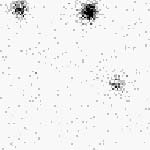
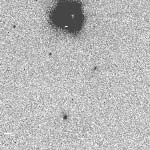
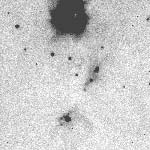
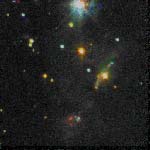
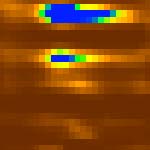
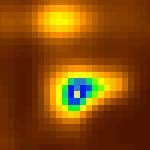

 |  |
|
 |  |  |
 |  |
You may also see any of these images by clicking on the individual images. The "postage stamps" are arranged in a 3 × 3 matrix in order of wavelength: x-ray, blue, visual, red, near infrared pseudocolor, 12µm, 60µm, mm radio maps, and VLA cm radio maps. If a region is blank, then we offer no image at that wavelength, either because we have none or, in some cases, because there is no additional information in that image. After selecting an image, others of the matrix may be selected from a "clickable" colorbar beneath the image.
This group of stars is a small star forming aggregate lying just south of the L1641N group. V380 Ori, the optically brightest object in this group has been recognized for a long time as a member of the Herbig Ae/Be star population (Herbig 1960); it is a young intermediate mass star. This star is the bright object illuminating the large reflection nebula (NGC 1999). The original H-H objects (Herbig 1951, Haro 1952) are also found in this field. They are the nebulous objects lying in the lower half of this field. An optical-infrared study of this region (Strom et al. 1985) was able to identify the powering source of the outflow, of which HH 1 & 2 are the visible manifestations, as the cm wavelength VLA source discovered by Pravdo et al. (1985). A water maser source, detected both by the VLA and IRAS also lies within this field as do numerous other extremely young objects as shown by the luminosity function derived for the region by Strom, Strom and Merrill in their infrared imaging study of L1641.
If you wish more information about these images, a page is available for your perusal.
References
Haro, G. 1952, ApJ, 115, 572
Herbig, G. 1951, ApJ, 113, 697
Herbig, G. 1960, ApJ Suppl, 4, 337
Pravdo, S.H. et al. 1985, ApJ Letters, 293, L35
Strom, K.M. et al. 1985, AJ, 90, 2281
Strom, K.M., Strom, S.E. & Merrill, K.M. 1993, ApJ, 412, 233
www@hanksville.org
© 2000